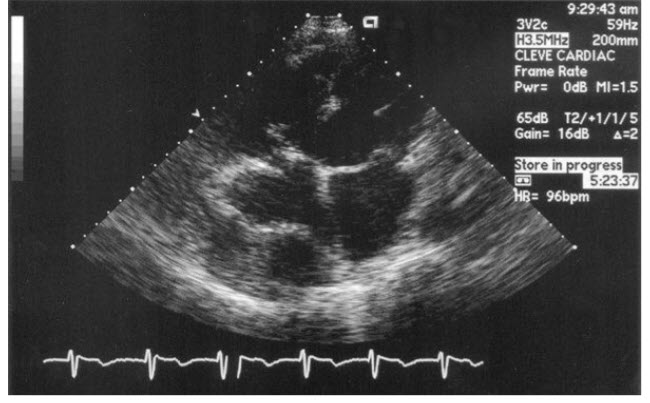Question 25#
A 19-year-old male college student presents to his local physician for evaluation of a dry cough. His symptoms started 3 days ago but now appear to be resolving. He had planned a trip overseas but was concerned and is now seeking advice. His physical examination is unremarkable. A CXR is performed and is read as showing an enlarged right cardiac silhouette. A TTE is ordered, which is shown in Figure below.

The patient most likely has which of the following conditions?
A. He has a pericardial cyst that is benign; no further treatment should be offeredB. He has cardiac tamponade requiring a pericardial tap
C. He has a pleural effusion
D. There is no pathology. The CXR was misread
E. He has mesothelioma
Correct Answer is A
Comment:
He has a pericardial cyst that is benign; no further treatment should be offered. The TTE and CXR show a pericardial cyst. Pericardial cysts are usually smooth structures containing transudative fluid. They are frequently only 2 or 3 cm in diameter, often located at the right cardiodiaphragmatic angle, and clinically silent. However, cysts can be associated with chest pain, dyspnea, cough, and arrhythmias likely caused by compression of adjacent tissues. They can also become secondarily infected. In this patient, whose nonspecific symptoms appear to be resolving, no further treatment is needed.